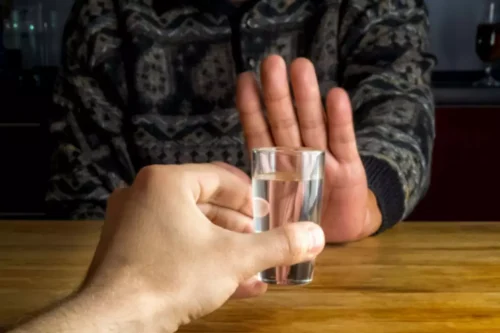
Anabolic steroids are drugs derived from testosterone, a hormone which is produced in the testes of males and, to a much lesser extent, in the ovaries of females. Testosterone is partially responsible for the developmental changes that occur during puberty and adolescence and is also involved in controlling the build-up and breakdown of the main biochemical components of all tissues, including muscle. The most common stimulants detected in anti-doping tests include amphetamines, cocaine, ecstasy and methylphenidate (Ritalin). The actual effects vary according to the drug and to its method of ingestion—drugs that are snorted or injected will produce more immediate results than those that are taken in pill form. In general, the long-term effects of performance-enhancing drugs haven’t been studied enough. It’s common for athletes who exercise for long amounts of time to use a lab-made type of erythropoietin called epoetin.
Other Drug Use Among Athletes
Opioid use over an NFL career is estimated to be around 52% with 4% using at any given time, whereas one-quarter to one-half of high school athletes have used nonprescription opioids with a lifetime opioid use between 28 and 46% [5,26]. A systematic review found that marijuana use had replaced tobacco use as the second highest used drug among athletes and others suggested one in four athletes have used marijuana recently or within the past year [27,28,29]. The physical and psychological adverse effects of anabolic androgenic steroids https://ecosoberhouse.com/ (e.g., kidney and liver damage, acne, gynecomastia, suppression of normal testosterone production, aggression, depression) are well established. What physicians may not recognize are the potential adverse effects of novel, investigational drugs that are being used as doping agents. These include selective androgen receptor modulators (e.g., the investigational drugs ostarine [Enobosarm] and LGD-4033 [Ligandrol]), which have substantial anabolic effects on muscle and bone and significant potential for misuse in sports.
Nondrug performance-enhancing measures

With theta burst, there is some data to support impaired alcohol intake as well as the potential modulation of signals induced by drugs in cortex areas involved in dependence [62,63]. In the transcranial direct current studies, the results have been tepid at best with the most recent metanalysis revealed small positive effects on alcohol craving and consumption which contradicted a previous metanalysis [64,65]. One RCT performed recently demonstrated higher rates of abstinence in those treated with drug use in sports tDCS compared to other conditions but only for two weeks post rehabilitation [66]. Through doping, we understand the use by athletes of substances prohibited by the antidoping agencies in order to gain a competitive advantage. Since sport plays an important role in physical and mental education and in promoting international understanding and cooperation, the widespread use of doping products and methods has consequences not only on health of the athletes, but also upon the image of sport.

Human growth hormone
- The danger here is that an athlete may not want to wait several weeks, or even months, to get back to their sport.
- The primary medical use of these compounds is to treat conditions such as asthma and other respiratory ailments.
- However as HGH is often used in conjunction with other PEDs its direct role in these benefits is unproven.
- Blood transfusion is an effective and relatively simple method of allowing athletes to boost the number of red blood cells in their blood, improving their aerobic capacity and endurance.
- Even if a PED is originally used for injury or surgery recovery, the drugs’ effects can be addictive and lead to more long-term use and unfair advantage in competition.
The development of Athlete Biological Passports (see below), has made even this method more detectable, as the passports allow testers to see the indirect markers of blood doping. English Rugby player Terry Newton was suspended in 2010 after testing positive for human growth hormone, while Bulgarian sprinter Inna Eftimova was banned from competition in 2012 after a returning a positive HGH test. Human growth hormone (HGH; also called somatotrophin or somatotrophic hormone) is a naturally-occurring hormone produced in the human body. It promotes physical development—particularly the growth of bone—during adolescence. It stimulates the synthesis of collagen, which is necessary for strengthening cartilage, bones, tendons and ligaments, and also stimulates the liver to produce growth factors.
Adverse health consequences of performance-enhancing drugs: an Endocrine Society scientific statement

One potential benefit of this type of treatment is that it can allow the possibility of home treatment providing flexibility and protecting confidentiality. The downside of this treatment is that it is not currently FDA approved and its use is considered investigational or experimental at this time in the United States. More randomized controlled studies are needed to be performed to demonstrate the potential true benefit of this treatment especially in sports population. Many athletes may be hesitant to using any treatment that was not FDA approved due to fears of violating the rules by which their sports are governed.
Substances prohibited in-competition
With the USADA, as noted in the WADA code, testing may occur in competition or out of competition and can occur at any time and at any location. Testing can result in disqualifications, sanctions, and stripping of medals and world titles. Nutritional supplements include vitamins, minerals, herbs, extracts, and metabolites.39 Importantly, the purity of these substances cannot be guaranteed, such that they may contain banned substances without the athlete or manufacturer being aware.
- Testosterone is partially responsible for the developmental changes that occur during puberty and adolescence and is also involved in controlling the build-up and breakdown of the main biochemical components of all tissues, including muscle.
- There are two different types of controls that can be conducted in competition or in training.
- Low-intensity current is given for 30 min per session and the number of sessions can vary.
- As with any anabolic steroid use, withdrawal from testosterone use may lead to depression, and even suicide.
What are the effects of taking drugs? Australian Government Department of Health and Aged Care

Human growth hormones and peptide hormones


